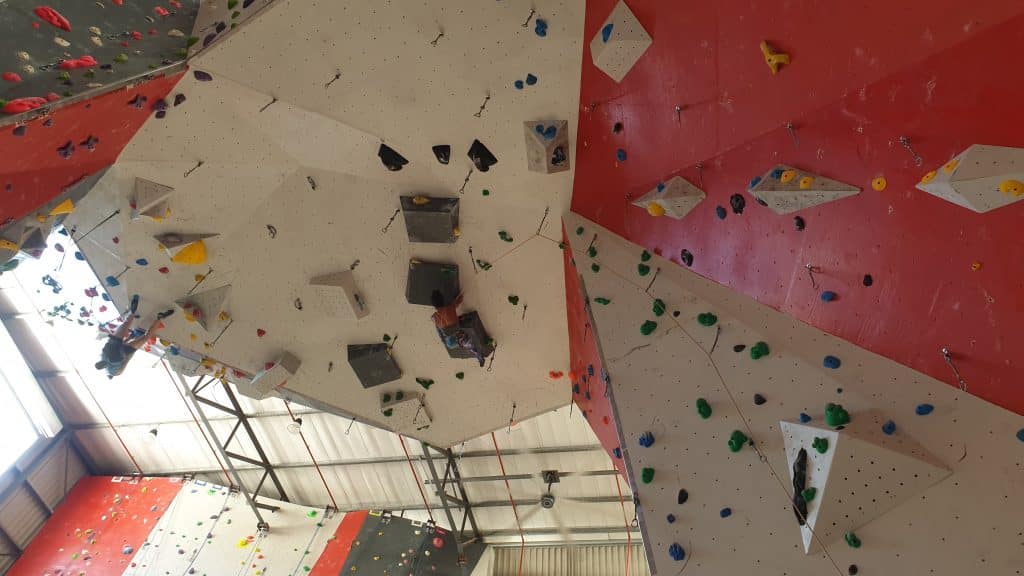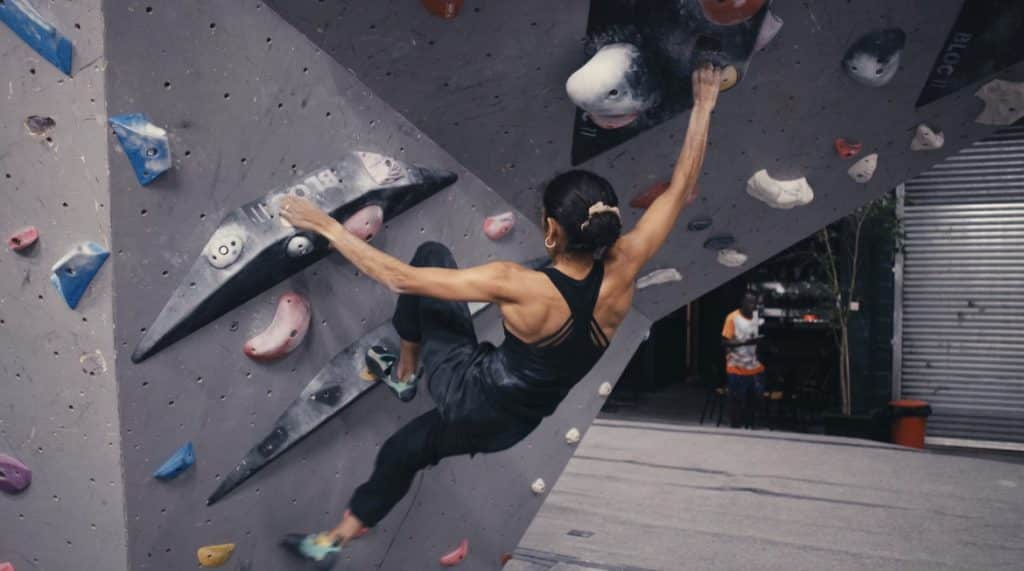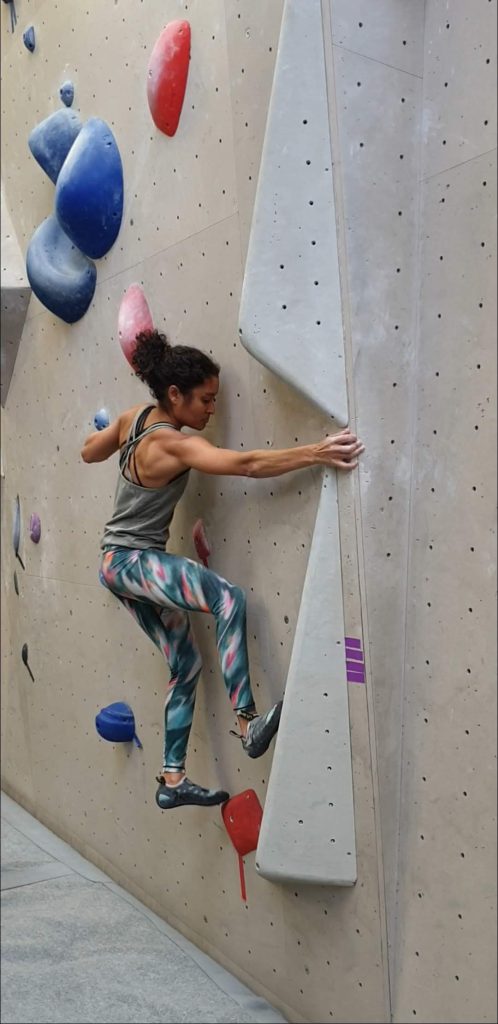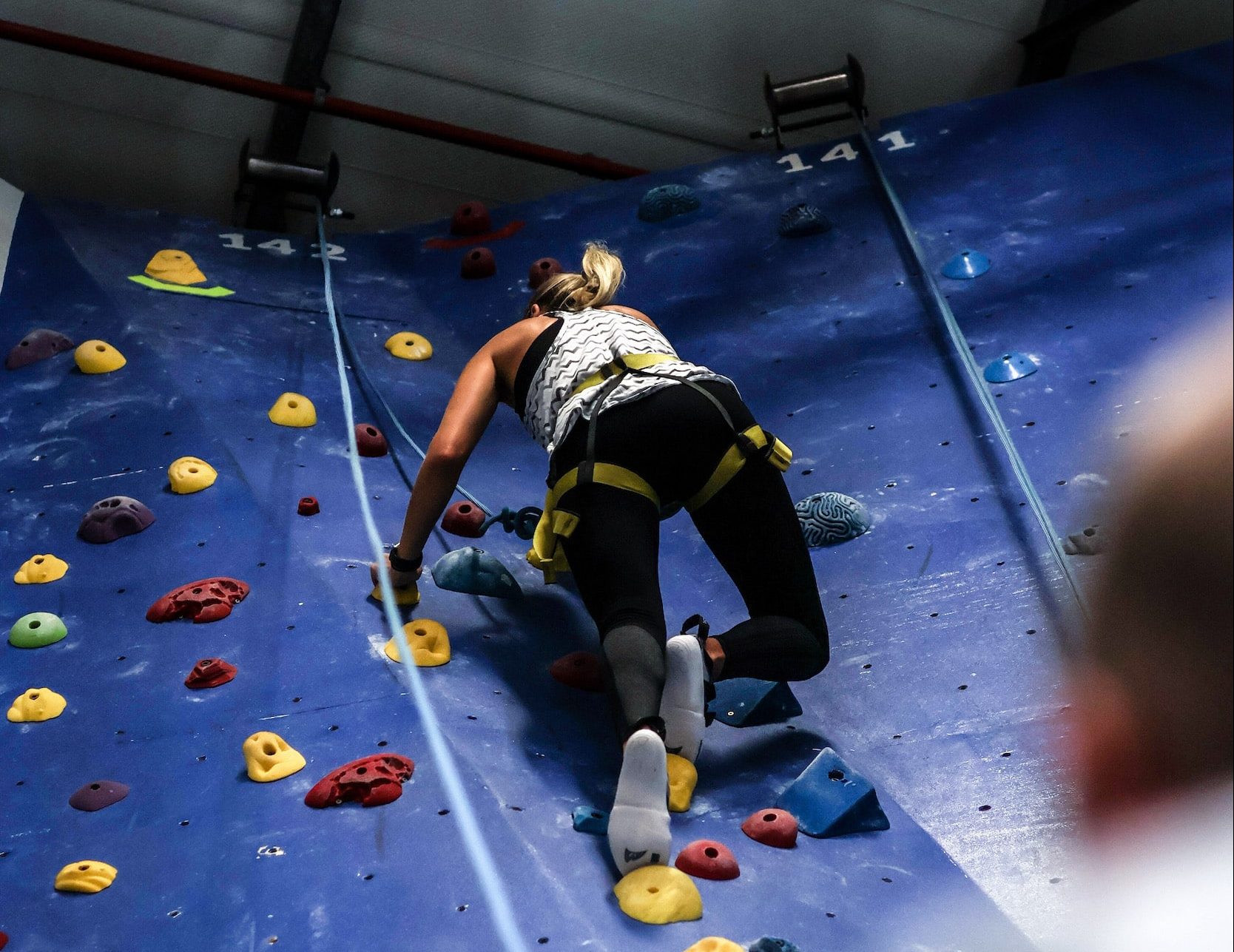A. Terms of Use for users.
1. Who is covered by these General Terms of Use
We at Wild Air Sports, as defined in this website’s imprint, (hereinafter referred to as “We“ or “Our“ or “Us“) want to provide you – Our customers, fans and community – the best products, content and services available at any time, on Our webpages and apps (“Platforms”) and to continue to develop these products, content and services with you. However, every cooperation needs a clear set of ground rules in order to guide how we interact with each other and to define core values. These General Terms of Use aim to set out the basic framework between you and Us for Our free products, content and services, and thus form the common basis for us to work together (“Rules”).
2. Scope of application
These General Terms of Use apply to the use of any of Our products, content and services (“Content”) freely available to you on Our Platforms. This includes any use of the Content by you, whether you’re visiting and browsing Our webpages and apps, signing-up for events, newsletters and similar offers, downloading and streaming Our Content, or registering and creating an account.
3. Your obligations as a user
We believe that successful collaboration and social interaction online requires good manners (netiquette) and rules of conduct. Our Content is provided for your personal use only, which means you cannot use it for any commercial or otherwise profit-making purposes. Our cooperation is based on condition that you comply with applicable laws, do not violate Our rights or the rights of third parties and that you use Content solely in a manner consistent with these Rules and do not destroy, damage or otherwise exploit it.
We also believe in the importance of mutual respect and consideration towards others. Therefore, any content that you post using Our services must not contain any form of hate speech, defamation or be otherwise likely to cast a negative light on Us or someone else.
To ensure that everything runs smoothly, we must all be responsible for the content that we own or control. Therefore, you must ensure that any information you provide Us is correct, complete and up to date at all times during our cooperation.
4. Terminating this cooperation
If we determine that things are not working between you and Us, in particular, if you violate any of these Rules, we reserve the right to terminate this cooperation at any time.
5. Our content and services
5.1 All rights to Content reserved by Us
All Content on Our Platforms, including content and services provided by you or any third parties, i.e., in particular all texts, logos, brands, graphics, artwork, sounds, music and software (including the access software) is protected by copyright, personal rights, registered designs, patents, trademarks, service marks, design rights, database rights, trade secrets, rights of confidence and other similar rights (“IPR”). All intellectual property rights existing on the Platforms and to the Content are either Our property or have been licensed to Us. All rights are reserved by Us or, if provided by a third party, they are reserved by the third party (and even if such content or service is not expressly marked as being legally protected or registered, this does not mean that we or third parties waive any applicable intellectual property rights, neither wholly nor partially with respect to such content or service). You are not permitted to reproduce, copy, post, republish, transmit, record, transfer or process any content, materials or portions thereof without Our express written permission in advance, nor are you permitted to do or attempt anything that violates Our intellectual property rights or any intellectual property rights licensed to Us or owned by third parties. This also applies to the ideas and concepts on which the Platforms or Content are based, even if they are not protected by intellectual property rights.
5.2 Your license for use of Our Platforms and Content
While We hold all rights to the Content on Our Platforms, We want to enable you to easily access Our Platforms and Content, so that you can explore everything We have to offer. We therefore grant you a limited license to use Our Content for your personal use only. This means that you can enjoy Our Content as a private individual, whether at home or on the go. Your license does not, however, include the right to use Our Content as part of your commercial business ideas or any other commercial activities, nor does it allow you to reproduce, modify or otherwise exploit Our Content. You are also not permitted to transfer this license to third parties.
We may from time to time give you the ability to embed certain elements contained in the Platforms or Content into third party platforms pursuant to the license terms contained herein. If you do so, you may not modify, build upon or block any portion or functionality of the Content, including links back to Our Platforms. You also agree that We have the right to set Cookies, serve ads and collect information (tracking) through such embed.
Therefore, you undertake to obtain the consent by the user for such use (especially in line with Our Privacy Policy) before providing the Content. If user does not provide consent, you may not provide the Content and you inform the user of the possibility to watch the Content (without Cookies) on Our Platforms. In any case you have to comply with the applicable (data protection) law(s) and these Terms.
5.3 Third Party Content
Our Platforms may utilize or incorporate digital content or services from third-party vendors (“Third-Party Content”). You acknowledge and agree that your right to use such content or services of third parties may be subject to additional terms and conditions of the third party providing these services. If you do not agree to these additional conditions, you are not permitted to use the respective third-party content or services.
6. Special features
6.1 Wild Air Sports Account
To access or use account-accessible functionalities of the website, such as, but not limited to library, favourites, interests, video resume, recommendations etc., You may have to become a registered user. We may change, remove and/or add Our account-accessible functionalities from time to time.
6.2 Peer2Peer Service Providers
You should note that by using some of Our Platforms and Content, you are also agreeing that your Internet and connectivity resources may potentially be used by Our P2P service provider (“P2P provider”). Please be aware that though Our P2P provider strives to limit such effect, the use by Our P2P provider of your resources may put a burden on your Internet connection and downloading speed, and might increase your use under a limited Internet connection package. The P2P provider uses your local resources to store content temporarily, upload content to other users, and download content from different users, while temporarily exposing other users to your IP address. This P2P achieves faster access to Our Content through a download from a significant number of simultaneous users of the same content (for example in peak times of live events). You are able to opt-out of the P2P network at the start of each Content.
7. User-Generated Content
7.1 What do We mean by “User-Generated Content”?
Our Platforms offer a variety of features, which enable you to engage with Us and the community by posting your own comments, news, texts, illustrations, data, files, images, graphics, photos, sounds, music, videos, information, content and/or other materials and by liking, sharing and rating. All content contributed by you using these functions is collectively referred to herein as “User-Generated Content” or “UGC”.
7.2 Unrestricted license to your UGC for Our purposes
In some cases, you or third parties may have copyrights or other intellectual property rights to your UGC.
To the extent that you contribute to Our Platforms in the form of UGC, at the time of participation you grant Us a worldwide, unrestricted, irrevocable, non-expiring license free of charge that is transferable to third parties to use your UGC in its full scope and extent by all means and in all media and to create derivative works as well as to adapt, digitize, dub and otherwise exploit your UGC. In particular, this license also includes use of UGC in advertisements and promotional campaigns and is in no case limited to the Platform on which the UGC was provided by you. You agree that you have no right or claim any fees or additional consideration for Our use of the UGC.
Finally, you grant other users permission to access your UGC and to use, reproduce, like and share it, to create derivative works, publicly display and present it, transfer and publish it to the extent this is permitted by the functionality of Our services and these terms of use.
7.3 Viewing and removing UGC
We have the right but not the obligation to monitor UGC. We have the right to modify, withhold, remove or block access to UGC at Our own discretion and for any reason whatsoever.
7.4 Your personal information and UGC
You give Us the right (but not the obligation) to use your biographical information including, without limitation, name, image, voice, biography, likeness and geographic location in connection with broadcasting, printing, online or other use or publication of the UGC in conformance with the above license contained herein.
7.5 General conditions for UGC
Before We can allow you to contribute your UGC, you must agree to comply with the following rules. You therefore undertake, represent and warrant that your UGC shall in no circumstance:
(i) cast a negative light on Us or on Our activities, businesses or brands. In particular, you are prohibited from using the following content in connection with your UGC: (a) illegal products, content, services or materials; (b) coverage of accidents, assaults, catastrophes or riots; and/or (d) competing products (in particular beverages containing caffeine, taurine or guarana);
(ii) be unlawful, threatening, racist, libellous, defamatory, invasive of privacy or publicity rights, vulgar, obscene, profane, pornographic or otherwise objectionable, or otherwise violate any applicable law;
(iii) encourage conduct that would constitute a criminal offence, give rise to civil liability or otherwise violate any law;
(iv) be an advertisement for goods or services or a solicitation of funds;
(v) enable the identification of personal information such as messages, phone numbers, social security numbers, account numbers, addresses, or employer references; or
(vi) contain any virus, trojan horses or other harmful code or script.
Moreover, any conduct that We believe, in Our sole discretion, restricts or inhibits any other user from using or enjoying Our Platforms or Content will not be permitted.
7.6 Guarantees and indemnification
In order to ensure that these rules are complied with and to safeguard Our interactions, you provide the following guarantees and indemnification to Us with respect to your UGC:
You acknowledge and agree that you are solely responsible for the UGC you submit. You represent and warrant that you are the owner of all rights to your UGC and that it does not violate or infringe any third-party rights such as personality rights (in particular the right to one’s own image), intellectual property rights such as trademarks, patents, copyrights or other legally protected property rights.
You further represent and warrant that all the requisite rights, approvals, permissions and waivers of rights have been properly obtained from each participant, actor, moderator, contributor, or other persons involved in the UGC or the associated rights, services or institutions, and that you are authorized to exercise those rights at your own discretion and in the scope and extent provided for herein.
You agree to indemnify and hold Us fully and completely harmless from any third-party claims arising in connection with the upload of your content and Our use thereof for the purposes stipulated at the time of upload, as a result of your negligent or intentional violation of your above guarantees.
8 Liability
We and Our employees, distributors, licensors and representatives cannot be made liable for Our free Content, whether by contract, tort (including and without limitation negligence) or other act or omission, regardless of whether such act or omission is direct, indirect, consequential or specific. The exclusions set forth in this section apply even if the loss or harm suffered by you was or should have been foreseen by Us and/or you informed Us of the risk that you suffered the loss or harm.
Nothing in these General Terms of Use shall limit or exclude Our liability for death or personal injury caused by Our negligence, for fraud or fraudulent misrepresentation or for any other type of liability which cannot be limited or excluded by applicable law, or otherwise affect your statutory rights as a consumer.
9 Final words and rules
Each provision of these Rules applies separately and independently. If any provision of these Rules is or becomes invalid or unenforceable, whether in part or as a whole, the remaining provisions of these Rules shall remain unaffected. In such case, the affected provision will either be construed and modified to the minimum extent necessary to render it valid or repealed and replaced with a valid provision that best gives effect to the purpose of these Rules and enables them to remain in full force and effect to the extent permitted by law.
These Rules shall be governed by and construed in accordance with the laws of the country, where the entity named in the imprint is seated. All disputes arising out of or in connection with these Rules, including any questions regarding their existence, validity or termination, shall exclusively be settled by the court responsible for commercial matters in the city of the country, where the entity named in the imprint is seated, without reference to its rules relating to conflicts of law. The application of the United Nations Convention on Contracts for the International Sale of Goods of 11 April 1980 shall be excluded.
The original version of the Rules is in English. Any translated version is for your convenience and information only. In case of disputes the English text shall prevail.
B. Terms of Use for users from the United States:
Welcome!
These Terms of Use (“Terms”) set out the terms and conditions by which Wild Air Sports, whose offices are at Oberst Lepperdinger Straße 11-15, 5071 Wals-Siezenheim, AUSTRIA, and its affiliates (hereinafter “we” or “us” or “our”) offer you access to our Properties. By “Properties” We mean websites, widgets and embedded content, apps on mobile devices, gaming consoles, connected devices or other consumer electronic devices, social media experiences or other places where this Policy is referenced or posted.
THESE TERMS CONTAIN A BINDING ARBITRATION PROVISION. YOU AGREE THAT, EXCEPT FOR CERTAIN TYPES OF DISPUTES DESCRIBED BELOW, ALL DISPUTES BETWEEN YOU AND US WILL BE RESOLVED THROUGH BINDING INDIVIDUAL ARBITRATION, AND YOU WAIVE ANY RIGHT TO PARTICIPATE IN A CLASS ACTION, CLASS ARBITRATION, OR REPRESENTATIVE ACTION. PLEASE READ THE SECTION TITLED “DISPUTES; ARBITRATION; CLASS ACTIONS; JURY TRIAL” BELOW TO LEARN MORE.
Using these Properties indicates your unconditional agreement to these Terms, including our Privacy Policy, as updated from time to time. If you are under 18, you must obtain the consent of your parent or guardian to access our Properties. If you are under 13 years old, you are not permitted to register as a user, sign up for any promotional messages (see below), or otherwise provide us any personal information. Supplemental terms may apply to some Properties, such as refund and shipping policies, or rules for a contest or sweepstakes, and are deemed a part of these Terms as appropriate. Our Privacy Policy explains how we treat your “Personally Identifiable Information” and “Non-personally Identifiable Information” as we define those terms in the Privacy Policy. The supplemental terms will apply to the extent there is a conflict with these Terms. These Terms (including the Privacy Policy and any additional terms incorporated by reference) constitute the entire agreement between you and us, and supersede all other written or oral agreements.
Our Properties contain “Property Content” (as defined below) that may include dangerous activities performed by professionals or under the supervision of professionals. Accordingly, we ask that you do not attempt or recreate any of the activities performed in our Property Content.
1. PURPOSE AND USE
A. We provide our Properties for entertainment, informational and/or promotional purposes only. We grant you a non-exclusive, non-assignable, non-sublicensable limited license to our Properties and Property Content for your personal, non-commercial use only. “Property Content” means our Properties and all they contain, including but not limited to any video, music, text, images, graphics, sounds, information, URLs, technology, documentation and interactive features included with or available through our Properties, derivative works or enhancements, and all intellectual property rights to the same, including all copyrights, patents, trademarks, service marks, trade names and trade dress.
B. We may from time to time give you the ability to embed certain elements contained in the Properties or Property Content into third party platforms pursuant to the license terms contained herein. If you do so, you may not modify, build upon or block any portion or functionality of the Property Content, including links back to our Properties. You also agree that we have the right to serve ads and collect information through such embed. In addition, you will post your own terms and privacy policy consistent with applicable law, your use of our content, these Terms and our Privacy Policy.
C. You are responsible for your use of the Properties. Our goal is to create a positive, useful, and safe user experience. To promote this goal, we prohibit certain conduct that may be harmful to other users or to us. When you use the Properties, you may not:
i. violate any law or regulation;
ii. violate, infringe, or misappropriate other people’s intellectual property, privacy, publicity, or other legal rights;
iii. post or share anything that is illegal, abusive, harassing, harmful to reputation, pornographic, indecent, profane, obscene, hateful, racist, discriminatory or otherwise objectionable;
iv. send unsolicited or unauthorized advertising or commercial communications, such as spam;
v. use any means to spider, harvest, scrape, crawl, or participate in the use of software, including spyware, to collect data from the Site or Services or any Web pages contained in the Properties;
vi. transmit any viruses or other computer instructions or technological means whose purpose is to disrupt, damage, or interfere with the use of computers or related systems;
vii. stalk, harass, or harm another individual;
viii. impersonate any person or entity or perform any other similar fraudulent activity, such as phishing;
ix. attempt to circumvent any technological measure implemented by us or any of our providers or any other third party (including another user) to protect the Properties;
x. attempt to decipher, decompile, disassemble, or reverse engineer any of the software or other underlying code used to provide the Properties; or
xi. advocate, encourage, or assist any third party in doing any of the foregoing.
2. USER CONTENT
A. “User Content” includes video, text, images, sounds and any other information (including names and likenesses), material or ideas you provide to us. When you post or otherwise make available User Content, you grant us a universal, royalty-free, perpetual, irrevocable, non-exclusive, fully sublicensable and transferable right to host, store, use, reproduce, modify, distribute, create derivative works based upon, translate, communicate, publicly display, publicly perform, communicate, transmit, display advertisements in connection with and publish the User Content in whole or in part as we in our sole discretion deem appropriate in any format, media or technology now known or later developed, including for purposes of advertising or promoting the Properties or us. You represent that User Content you provide is original with you, does not and will not (when used by us consistent with the above license) violate or infringe upon the rights of any third parties, including, without limitation, any intellectual property rights and rights of publicity and/or privacy.
B. You agree and understand that we are not obligated to use any User Content and you have no right to compel such use. You understand and acknowledge that we have wide access to ideas, stories, designs, and other materials, and that new ideas are constantly being submitted to it or being developed by our own employees. Many ideas or stories may be competitive with, similar or identical to your User Content in structure, purpose, function, theme, idea, plot, format or other respects. You acknowledge and agree that you will not be entitled to any compensation as a result of our use of any such similar or identical material. Finally, you acknowledge that, with respect to any claim you may have relating to or arising out of our actual or alleged exploitation or use of any User Content or other material you submit to the Properties or us, the damage, if any, thereby caused will not be irreparable or otherwise sufficient to entitle you to injunctive or other equitable relief and your rights and remedies in any such event shall be strictly limited to the right to recover damages, if any, in an action at law consistent with the terms set forth in the sections entitled “DISPUTES RESOLUTION AND MANDATORY ARBITRATION; NO CLASS ACTIONS; NO JURY TRIAL”.
3. ACCOUNTS, REGISTRATION, TERMINATION
A. To access or use some features of our Properties, you may have to become a registered user. If you are under the age of sixteen (16), then you are not permitted to register as a user, sign up for any Promotional Messages (see below), or otherwise provide us any personal information.
B. If you become a registered user, you will provide true, accurate and complete registration information and, if such information changes, you will promptly update the relevant registration information. During registration, you will create a username and password (a “Account”). You are responsible for the activity that occurs under your Account, and for maintaining the confidentiality of your Account. You agree to Contact Us immediately if you become aware of any breach of security or unauthorized use of your Account.
C. You may terminate your Account at any time by Contacting Us. Account terminations (initiated by you or us) are generally permanent and cannot be undone. If your Account is terminated, you will no longer have access to information you have stored within our applicable Properties (for example, content that you liked, event registrations). Further, if you are participating in a Promotion (see below) when your Account is terminated, you may be automatically disqualified and/or lose the ability to claim a prize/reward). For these and other reasons, prior to termination of your Account, please ensure that you have saved all information that you wish to keep.
D. Your Account may give you access to our other Properties, which may have different terms of use that will be made available and apply independently of these Terms.
4. PROMOTIONAL OFFERS
All promotional offers, sweepstakes, contests, giveaways and other promotions (“Promotions”) we may offer from time to time are subject to these Terms and any supplemental terms we disclose. Generally, with or without notice, we reserve the right to modify, suspend, cancel or terminate any Promotion in appropriate circumstances, including to extend or resume the stated entry period, disqualify any participant or entry, or award prizes in an alternate manner. You are responsible for all costs, expenses or taxes associated with your participation and/or receipt of any prizes or awards. We may condition your participation or receipt of a prize/award on the execution of a release and/or other agreements. By accepting a prize or award, you automatically consent to and grant us the right to use of your name, image, likeness, statements, biographical information and other information about you for publicity, advertising and promotional purposes, all without additional permission from or compensation to you.
5. PROMOTIONAL MESSAGES
A. Our Properties may include sending you promotional and non-promotional e-mails/ newsletters, text/SMS messages, chat messages, or other electronic or offline messages. The promotional messages may be recurring, meaning we will continue to send them to you until you unsubscribe via any of our disclosed methods.
B. Text/SMS Messages (“Message Service”). In addition to any terms specifically disclosed when you enroll for a Message Service:
i. “Message and Data Rates May Apply” which means that you may be charged message and/or data charges by your wireless carrier depending on your service plan.
ii. You certify that you are either the account holder or otherwise responsible for paying any wireless carrier charges associated with the Message Service or, if you are under the age of 18, that you have the permission of the account holder/person responsible for any such charges.
6. PAID TRANSACTIONS
A. we may make certain of our Properties (including applications, games, software and other digital content) available directly or through authorized third parties for a one-time license fee, on a subscription basis or under any other lawful pricing structure. The prices displayed on or for our Properties are in U.S. Dollars (“Prices”) and, unless we state otherwise in writing, exclude taxes and other government charges (“Taxes”), as well as delivery fees (as applicable). In connection with any order you place involving our Properties (each, an “Order”), you agree to pay the Prices, Taxes and other charges disclosed to you at check-out. All Prices are subject to change without notice. Orders are not final until we accept the Order. The Price charged for any of our Properties will be the price in effect at the time the order is placed. We strive to display accurate price information, however we may, on occasion, make inadvertent typographical errors, inaccuracies or omissions related to pricing and availability. We reserve the right to correct any errors, inaccuracies, or omissions at any time and to cancel any orders arising from such occurrence
B. In connection with any Order involving a virtual item (including characters, names, skins, goods) or in-game currency (together, “Digital Items”), you are paying for a limited, non-assignable license to access and use such Digital Items as intended by and solely as permitted within the Property. You do not have any right to reproduce, distribute, communicate to the public, make available to the public or transform any of our Properties or Digital Items via any online media, in any media format or channel now known or hereafter devised (except as may be expressly described or contemplated within our applicable Property). Digital Items purchased or available to you in or via our Properties can only be used in connection with the applicable Property associated with the Order. Digital Items are not redeemable or subject to refund and cannot be traded outside of any of our Properties for money or other items for value (for example, in-game currency has no cash value). We may modify or discontinue any or all Digital Items at any time, with or without notice to you.
C. Some of our Properties require or allow for paid subscriptions. By signing up for a subscription, you agreed that your subscription may be automatically renewed and, unless you cancel your subscription, you authorized the charges to your payment method for the renewal term. From time to time, we may offer a free trial subscription. If you register for a free trial subscription, we will begin to bill your account when the free trial subscription expires, unless you cancel your subscription before that time. If you cancel your subscription early, unless we provide otherwise in writing, you will not receive a prorated refund, but you will continue to have access to the product or service until the end of the term during which you canceled the subscription.
D. We reserve the right to refuse or cancel any Order prior to delivery. Some situations that may result in your Order being cancelled include system or typographical errors, inaccuracies in product or pricing information or product availability, fairness among customers where supplies are limited, or problems identified by our credit or fraud departments. We also may require additional verification or information before accepting an Order. We will contact you if any portion of your Order is cancelled or if additional information is required to accept your Order. If your Order is cancelled after we have processed your payment but prior to delivery, we will refund your payment.
E. When you provide payment information, you represent and warrant that: (i) the credit card information you supply to us or our processor is true, correct and complete; (ii) you are duly authorized to use such credit card for the purchase; (iii) charges incurred by you will be honored by your credit card company; and (iv) that all the information you provide is accurate and that you will notify us of any subsequent changes.
F. You may have the right to cancel an Order placed depending on the nature of the applicable Property ordered and a return policy associated with the same . Please note that Orders for Digital Items, personalized items and items with a seal that has been broken are typically non-refundable. Subject to the foregoing, unless we provide otherwise in writing, the return period associated with our Properties (including any physical goods you may order) is thirty (30) from delivery. Depending on the nature and condition of the applicable item returned, you may be required to pay for return shipping fees and may only receive a pro rata portion of the amount originally paid.
7. COPYRIGHT POLICY
If you believe that any content appearing on a Property infringes your copyright rights, please forward the following information in writing to our “Copyright Agent”:
i. your name, address, telephone number, and e-mail address;
ii. a description of the copyrighted work that you claim has been infringed;
iii. the exact URL or a description of each place where alleged infringing material is located;
iv. a statement by you that you have a good faith belief that the disputed use has not been authorized by you, your agent, or the law;
v. your electronic or physical signature or the electronic or physical signature of the person authorized to act on your behalf; and
vi. a statement by you that the information in your notice is accurate, and a statement made under penalty of perjury that you are the copyright owner or authorized to act on the copyright owner’s behalf.
Our Copyright Agent’s address is:
Wild Air Sports
Email: [email protected]
We will review any notices of copyright infringement and take appropriate action. Inquiries that do not follow this procedure may not receive a response. Any notices of copyright infringement are subject to counter-notice as detailed below.
If you believe the content that was removed (or to which access was disabled) is not infringing, or that you have the authorization from the copyright owner, the copyright owner’s agent, or pursuant to the law, to post and use such content, you may submit a counter-notice to the address listed above containing the following information:
i. Your physical or electronic signature;
ii. Identification of the content that has been removed or to which access has been disabled and the location at which the content appeared before it was removed or disabled;
iii. A statement that you have a good faith belief that the content was removed or disabled as a result of mistake or a misidentification of the content; and
iv. Your name, physical address, telephone number, and e-mail address, a statement that you consent to the jurisdiction of the federal court in Los Angeles, California, and a statement that you will accept service of process from the person who provided notification of the alleged infringement.
After we receive your counter-notification, we will forward it to the party who submitted the original claim of copyright infringement. Please note that when we forward the counter-notification, it includes your personal information. By submitting a counter-notification, you consent to having your information revealed in this way. We will not forward the counter-notification to any party other than the original claimant.
After we send out the counter-notification, the claimant must then notify us within 10 days that he or she has filed an action seeking a court order to restrain you from engaging in infringing activity relating to the content that was removed or disabled. If we receive such notification we will be unable to restore the material. If we do not receive such notification, we may reinstate the material.
8. THIRD PARTY INDEMNITY
You agree to indemnify and hold harmless “Our Parties” (as defined below) from and against any and all “Losses” (as defined below) that may arise in connection with: (i) your use of the Properties in violation of these Terms; (ii) User Content provided by you; or (iii) any actual or alleged violation or breach by you of these Terms. “Our Parties” means Wild Air Sports and its officers, directors, employees, parents, partners, successors, agents, distribution partners, affiliates, subsidiaries and their related companies. “Losses” means claims, liabilities, losses, damages, obligations, costs and expenses (including reasonable attorneys’ fees and costs). You agree to cooperate fully with us in the defense of any claim that is the subject of your obligations hereunder.
9. WARRANTIES; LIABILITY
A. YOU EXPRESSLY AGREE THAT USE OF OUR PROPERTIES IS AT YOUR SOLE RISK AND THAT YOU WILL BE SOLELY RESPONSIBLE FOR ANY DAMAGE ARISING FROM DOING SO. WE ARE NOT RESPONSIBLE FOR THE ACTIONS, CONTENT, DATA, OR INFORMATION SHARED BY THIRD PARTIES. OUR PROPERTIES (INCLUDING SOFTWARE) AND ALL ASSOCIATED CONTENT ARE PROVIDED ON AN “AS IS” AND “AS AVAILABLE” BASIS WITHOUT WARRANTY OF ANY KIND, EITHER EXPRESS OR IMPLIED. TO THE FULLEST EXTENT PERMITTED BY LAW, WE DO NOT MAKE ANY COMMITMENTS ABOUT ANY CONTENT WITHIN OUR PROPERTIES, ANY SPECIFIC FUNCTIONS OR THE RELIABILITY, ACCURACY, SECURITY, TIMELINESS, NON-INFRINGEMENT, OR AVAILABILITY OF OUR PROPERTIES OR ANY ASSOCIATED CONTENT TO MEET YOUR NEEDS. TO THE FULLEST EXTENT PERMITTED BY LAW, WE DISCLAIM THE WARRANTY OF MERCHANTABILITY, FITNESS FOR A PARTICULAR PURPOSE OR THOSE ARISING OUT OF A COURSE OF DEALING OR USAGE OF TRADE, AND ALL OTHER IMPLIED WARRANTIES.
B. WHEN PERMITTED BY LAW, OUR PARTIES WILL NOT BE RESPONSIBLE FOR LOST PROFITS, REVENUES OR DATA, FINANCIAL LOSSES OR INDIRECT, SPECIAL, INCIDENTAL, CONSEQUENTIAL, EXEMPLARY OR PUNITIVE DAMAGES. TO THE EXTENT PERMITTED BY LAW, THE TOTAL LIABILITY OF OUR PARTIES FOR ANY CLAIMS UNDER THESE TERMS, INCLUDING FOR ANY IMPLIED WARRANTIES, IS LIMITED TO THE AMOUNT THAT YOU PAID US TO USE THE PROPERTIES (OR, IF WE CHOOSE, TO SUPPLY YOU WITH THE PROPERTIES AGAIN).
BY ACCESSING THE PROPERTIES, YOU UNDERSTAND THAT YOU MAY BE WAIVING RIGHTS WITH RESPECT TO CLAIMS THAT ARE AT THIS TIME UNKNOWN OR UNSUSPECTED, AND IN ACCORDANCE WITH SUCH WAIVER, YOU ACKNOWLEDGE THAT YOU HAVE READ AND UNDERSTAND, AND HEREBY EXPRESSLY WAIVE, THE BENEFITS OF SECTION 1542 OF THE CIVIL CODE OF CALIFORNIA, AND ANY SIMILAR LAW OF ANY STATE OR TERRITORY, WHICH PROVIDES AS FOLLOWS:
“A GENERAL RELEASE DOES NOT EXTEND TO CLAIMS THAT THE CREDITOR OR RELEASING PARTY DOES NOT KNOW OR SUSPECT TO EXIST IN HIS OR HER FAVOR AT THE TIME OF EXECUTING THE RELEASE AND THAT, IF KNOWN BY HIM OR HER, WOULD HAVE MATERIALLY AFFECTED HIS OR HER SETTLEMENT WITH THE DEBTOR.”
A general release does not extend to claims that the creditor or releasing party does not know or suspect to exist in his or her favor at the time of executing the release and that, if known by him or her, would have materially affected his or her settlement with the debtor or released party.
C. YOU AGREE THAT ANY CAUSE OF ACTION ARISING OUT OF, RELATING TO, OR IN ANY WAY CONNECTED WITH ANY OF OUR PROPERTIES OR THESE TERMS MUST COMMENCE WITHIN ONE (1) YEAR AFTER THE CAUSE OF ACTION ACCRUES; OTHERWISE, SUCH CAUSE OF ACTION SHALL BE PERMANENTLY BARRED. THIS PROVISION IS NOT APPLICABLE IN NEW JERSEY.
These Terms shall be construed in accordance with the laws of the State of California without regard to its conflict of laws rules. Any permitted court legal proceedings against one of Our Parties (i.e., those not subject to Mandatory Arbitration, as provided below) that may arise out of, relate to, or be in any way connected with our Properties.
10. DISPUTE RESOLUTION & MANDATORY ARBITRATION
(A) We each agree to first contact each other with any disputes and provide a written description of the problem, all relevant documents/information and the proposed resolution. You agree to contact us with disputes by contacting us at Contact Us. We will contact you based on the contact information you have provided us.
(B) If after 30 days the parties are unable to resolve any dispute raised under the previous provision, the dispute may only be submitted to arbitration consistent with this Section. We each understand that either of us would have had a right or opportunity to litigate disputes through a court and to have a judge or jury decide their case, but we are instead voluntarily choosing to have any disputes resolved through binding arbitration.
(C) We each agree that any claim or dispute between us, and any claim by either of us against any agent, employee, successor, or assign of the other, including, to the full extent permitted by applicable law, third parties who are not signatories to this agreement, whether related to this agreement or otherwise, including past, present, and future claims and disputes, and including any dispute as to the validity or applicability of this arbitration clause, shall be resolved by binding arbitration administered by the JAMS under its rules and procedures in effect when the claim is filed. The rules and procedures and other information, including information on fees, may be obtained from JAMS’ website (www.jamsadr.com) or by calling JAMS at 949-224-1810.
(D) We are entering into this arbitration agreement in connection with a transaction involving interstate commerce. Accordingly, this arbitration agreement and any proceedings thereunder shall be governed by the Federal Arbitration Act (“FAA”), 9 U.S.C. §§ 1-16. Any award by the arbitrator(s) may be entered as a judgment in any court having jurisdiction.
(E) Exception to Arbitrate. We each agree as follows: (i) either of us may bring qualifying claims in small claims court; (ii) to the extent state law permits either of us to seek injunctive or other equitable relief outside of arbitration, we each agree that such actions will be brought exclusively in the U.S. District Court for the Southern District of California or state court located in Los Angeles. we each consent and submit to the personal jurisdictions of these courts; and (iii) as set forth below, we each agree that any arbitration will be solely between you and Our Party, not as part of a classwide claim. If for any reason any court or arbitrator holds that this restriction is unconscionable or unenforceable, then our agreement to arbitrate doesn’t apply and we each agree to resolve the dispute in court.
11. NO CLASS ACTIONS
TO THE EXTENT ALLOWED BY LAW, WE EACH WAIVE ANY RIGHT TO PURSUE DISPUTES ON A CLASSWIDE BASIS; THAT IS, TO EITHER JOIN A CLAIM WITH THE CLAIM OF ANY OTHER PERSON OR ENTITY, OR ASSERT A CLAIM IN A REPRESENTATIVE CAPACITY ON BEHALF OF ANYONE ELSE IN ANY LAWSUIT, ARBITRATION OR OTHER PROCEEDING.
12. NO TRIAL BY JURY
TO THE EXTENT ALLOWED BY LAW, WE EACH WAIVE ANY RIGHT TO TRIAL BY JURY IN ANY LAWSUIT, ARBITRATION OR OTHER PERMITTED PROCEEDING.
13. AMENDMENTS; ASSIGNMENT
You agree that we may update these Terms at any time, and it is your obligation to check for updates. Updates do not apply retroactively. You may not assign these Terms or assign any rights or delegate any obligations hereunder, in whole or in part.
14. MISCELLANEOUS
A. Except as provided in these Terms, these Terms constitute the entire agreement of the parties with respect to the subject matter hereof and supersedes all prior or contemporaneous written or oral agreements between the parties with respect to the subject matter hereof. We reserve the right to provide you with operating rules or additional terms that may govern your use of our Properties generally or any unique aspect (“Additional Terms”). For instance, we may provide you Additional Terms relating to the cancellation or returned to an Order (see Section 6 above). To the extent any Additional Terms conflict with these Terms of Use, the Additional Terms will control.
B. Other than as set forth herein, these terms do not create any rights in favor of any third party. Our failure to take action to enforce our rights does not mean that we give up those rights or cannot take such action in the future. Our Properties may integrate, be integrated into, or be provided in connection with third-party websites, services, applications, platforms, and/or content (“Third-Party Solutions”). We do not control any Third-Party Solutions or any provider of such Third-Party Solutions (“Third-Party Providers”). If your access to any of our Properties is dependent on a Third-Party Solution (for example, accessing our application using an Apple iOS, Android, Microsoft Windows-powered device or gaming platform), then the applicable Third-Party Provider (for example, Apple Inc., Google, Inc. or Microsoft Corporation), shall be a third-party beneficiary of these Terms. However, no such Third-Party Provider is obligated to you under or otherwise a party to these Terms. Further, you agree to comply with, and your use of our applicable Property is conditioned upon your compliance with, all terms and conditions applicable the Third-Party Solution (for example, Apple and Android App Store terms). You represent to us that you have read and agreed to all such Third-Party Provider terms.
C. If you access the Properties from locations outside of the U.S. you do so on your own initiative and at your own risk, and you are solely responsible for compliance with local laws, if and to the extent local laws are applicable.
D. If a provision in these Terms is found to be illegal or unenforceable, that provision shall be removed from these Terms and the remaining provisions of these Terms shall remain in force.
E. At any time and for any reason or no reason we may restrict, suspend or terminate your access to the Properties, terminate your Account, and add, remove or modify functionality.
F. When using our Properties, you agree to comply with all applicable laws and regulations.
G. You agree to fully cooperate with us to investigate any suspected or actual activity that is in breach of these Terms.
H. Our Properties may link or contain links to other websites maintained by our licensors, affiliates and/or third parties. We do not operate, control or necessarily endorse the content found on these third-party websites. You assume sole responsibility for your use of third-party links and any content posted on third-party websites.















